Udon And Soba - 10 Varieties You Have to Try When You Visit Japan!

Today we introduce ten different varieties of udon and soba. You'll also learn about their ingredients, how they're prepared and the origins of their names. We think this information will come in handy when you actually visit an udon or soba shop.
Udon and soba are known as a kind of Japanese fast food, and since they don't take a long time to consume, they're great for eating on the run during your busy trip. Plus, they're served with a variety of toppings, allowing you to enjoy a wide range of different flavors.
But having said that, unless you're a Japanese person, it's rather difficult to know exactly what sort of topping comes with each kind of udon or soba. So today, from the extensive genre of hot udon and soba dishes available, we'll be introducing ten different versions worth knowing about, complete with photos.
1. Su Udon / Su Soba

Su Udon and Su Soba, refer to a simple dish that consists of a dashi soup broth and the udon or soba noodles only. In Tokyo and other parts of eastern Japan, this dish is also commonly called Kake Udon and Kake Soba.
This dish is a good choice when you want to just simply enjoy the flavor of the broth and the noodles, and also when you're on a budget.
2. Tempura Soba / Tempura Udon

As the name implies, Tempura Soba and Tempera Udon are soba and udon that come with a serving of tempura. The dishes are usually served with the tempura in the same bowl as the noodles and broth, but are also sometimes served separate from the soup bowl, as in the above photo.
Shrimp is the most common filling for this tempura. However, tempura filled with chopped vegetables can also appear on the menu. Dishes served with this vegetable tempura are called Kakeage Udon and Kakeage Soba, and are relatively inexpensive compared to their shrimp tempura-filled counterparts.
3. Chikara Udon / Chikara Soba
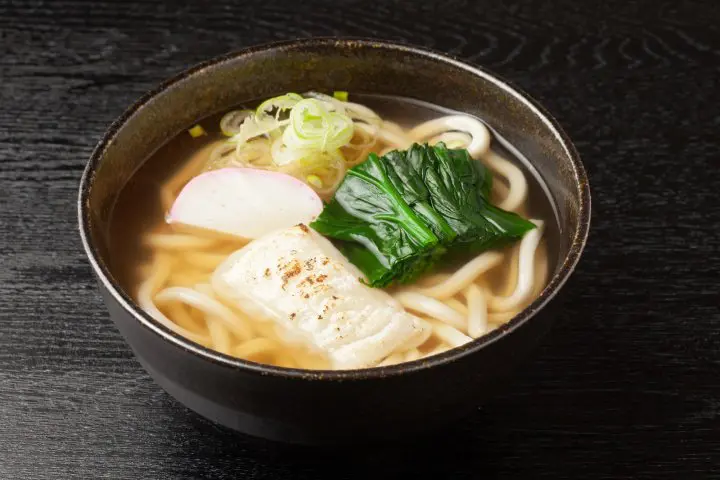
Chikara Udon and Chikara Soba are dishes that both have baked mochi (traditional rice cake) inside.
The mochi is usually placed inside the soup or on top of the udon or soba noodles. When the mochi is submerged in the soup it begins to soften, at which time it's ready to eat.
4. Kitsune Udon / Kitsune Soba
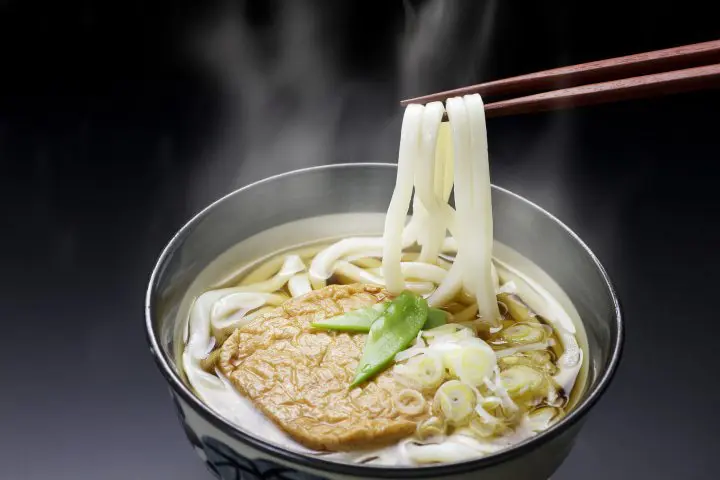
Kitsune Udon and Kitsune Soba refer to dishes that are garnished with aburaage (deep-fried tofu slices) on top. The aburaage is first simmered in a sweet and salty shoyu (soy sauce) broth before it's placed atop the udon or soba dish.
Generally speaking, at most udon and soba shops, the history of these noodles dates back a long time. In the early nineteenth century, udon and soba became a common staple of the Japanese diet. According to sources, a soba dish topped with aburaage and negi green onions first appeared around this time, and was called Kitsune Soba.
5. Tanuki Soba / Tanuki Udon

Tanuki Soba and Tanuki Udon are dishes garnished with agedama. Agedama, also called tenkasu, are the small pieces of tempura batter that are left over after the tempura has been deep fried (see photo above). There is also a cold version of this dish called Hiyashi Tanuki.
In Japan's Kanto region, this dish is called Tanuki Soba (see photo above). However in Kyoto, Osaka and other parts of the Kansai region, Tanuki Soba refers to soba topped with aburaage (as previously mentioned, in the Kanto region this is called Kitsune Soba).
6. Sansai Soba / Sansai Udon
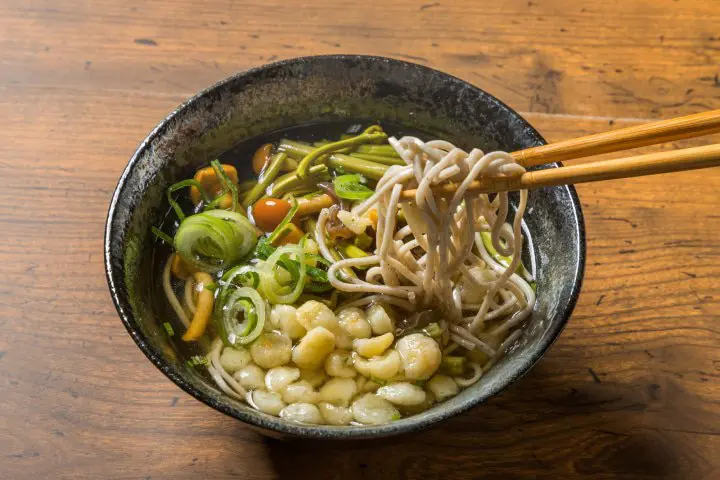
Sansai Soba and Sansai Udon refer to dishes topped with flavored sansai (edible wild vegetables and plants picked in the mountains).
In some cases the sansai topping includes mushrooms, and overall, this a healthy dish that's quite low in calories.
7. Tororo (Yamakake) Soba / Tororo Udon

Tororo Soba and Tororo Udon are dishes served with grated yamaimo (mountain potato) and nagaimo (Chinese yam) on top. Depending on the shop and also the way in which it's prepared, the word tororo (refers to the texture of these grated vegetables) can also be called yamakake.
For many first-timers, the uniquely sticky texture of the tororo can take some getting used to. However, it's highly popular among Japanese people because it's said to have beneficial health properties, such as boosting your energy when you feel tired and run down.
8. Niku Udon / Niku Soba
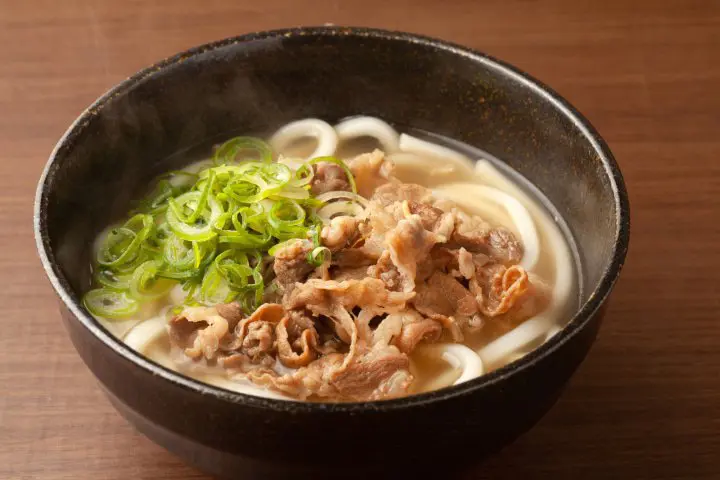
On those occasions when you have a big appetite to fill, Niku (meat) Udon and Niku Soba both make the perfect choice. As the name suggests, slightly sweet-flavored meat (beef, pork or chicken) is placed atop the udon and soba noodles.
There's also a different version of this dish called Kamo Nanban, in which soba noodles are garnished with duck meat.
9. Tsukimi Udon / Tsukimi Soba

Tsukimi Udon and Tsukimi Soba get their name from tsuki o mi(ru), or moon watching. In this dish, the bright colored egg yolk is thought to represent the perfectly round moon. In both of these dishes, a raw egg is placed over the udon or soba.
Japanese people are divided as to whether it's best to break the egg yolk at the start of the meal or near the meal's end. But since breaking and mixing in the egg yolk with the noodles at the start of the meal tends to cloud the soup's color, it might be a good idea to leave the yolk as it is until the end. Mixing in the raw egg with the soup and noodles gives a smoother, well-rounded flavor.
10. Curry Udon / Curry Soba
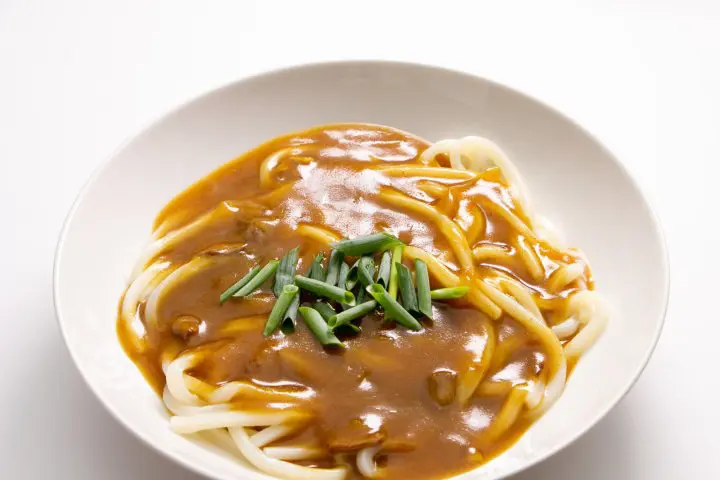
In the case of Curry Udon and Curry Soba, udon and soba noodles are mixed in with a flavorful sauce-like soup made from the broth and curry. Curry Soba is also sometimes called Curry Nanban.
Filled with meat and onions, there's alot of volume to this dish and the curry flavor is the perfect match for the udon and soba noodles. We recommend this dish when you want to try udon or soba with a slightly different kind of taste.
You May Also Like:
Soba Noodles: Their Calorie Content, Ingredients And Where To Eat Them
Nadai Fujisoba - Your Go-To Stop For Casual Soba Noodles And Katsudon
Udon Noodles: A Guide To Varieties, Prices And Recommended Shops
Try A Bowl Of Fresh, Fast And Cheap Udon At Marugame Seimen!
Udon Shin In Shinjuku: Fresh Udon Noodles Make A Perfect Dish
All pictures from PIXTA
ライター兼翻訳者、時にマーケティング調査員の顔も。訪日旅行客向けに東京都内レストランメニューの翻訳データ・ベースの作成や、宿・ホテル情報検索サイトの翻訳も手掛けてきました。旅行と食材研究が趣味です。



































![[Coupon Available] Attention Overseas Winter Sports Fans! Nagano's Sports Depot Has Evolved](https://resources.matcha-jp.com/resize/720x2000/2026/01/05-254819.webp)
![[2 hours from Tokyo ] 10 Quiet and Breathtaking Views of Mount Fuji in Yamanashi Hokuto City , Yamanashi - Part 2](https://resources.matcha-jp.com/resize/720x2000/2025/12/16-253037.webp)
